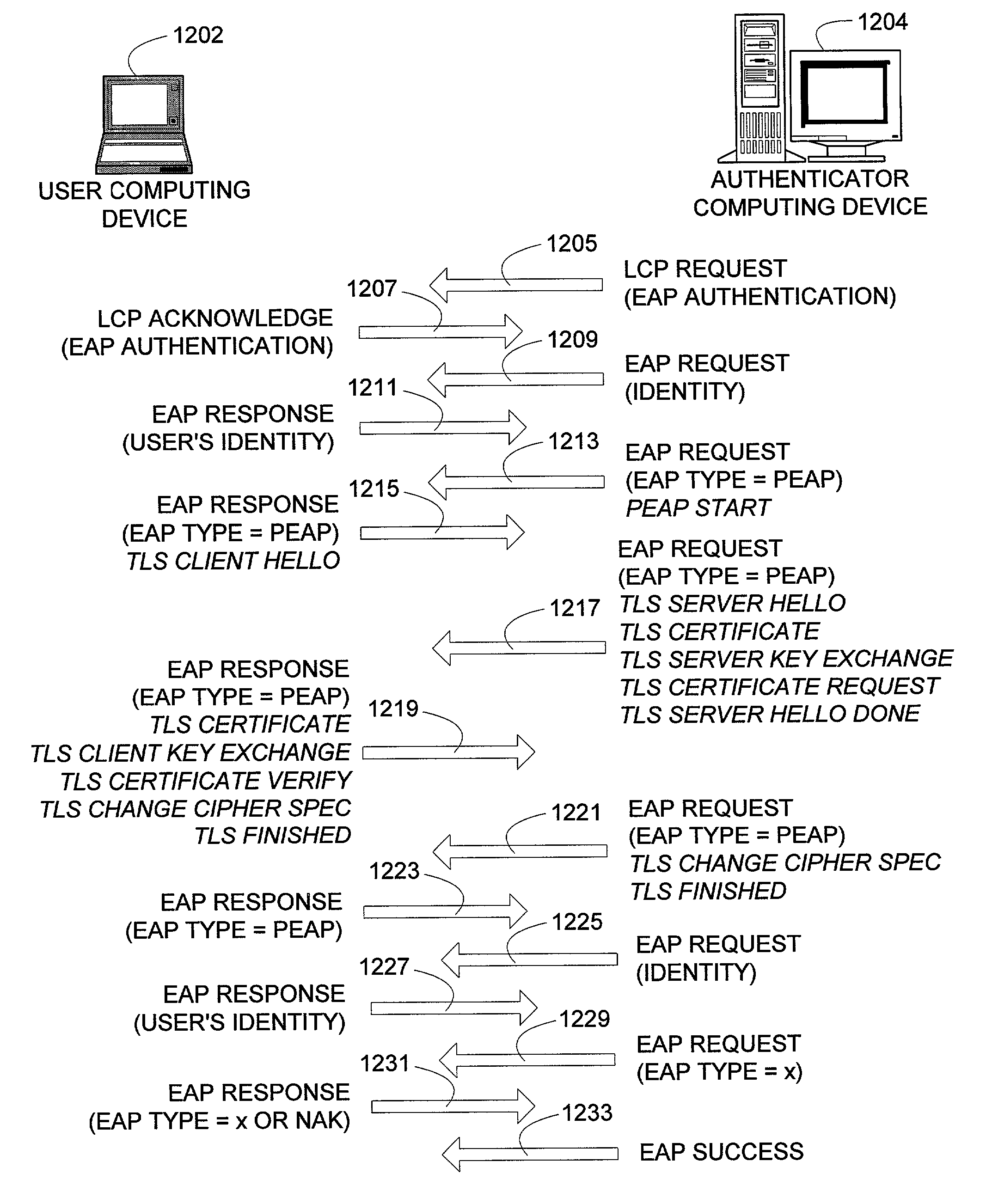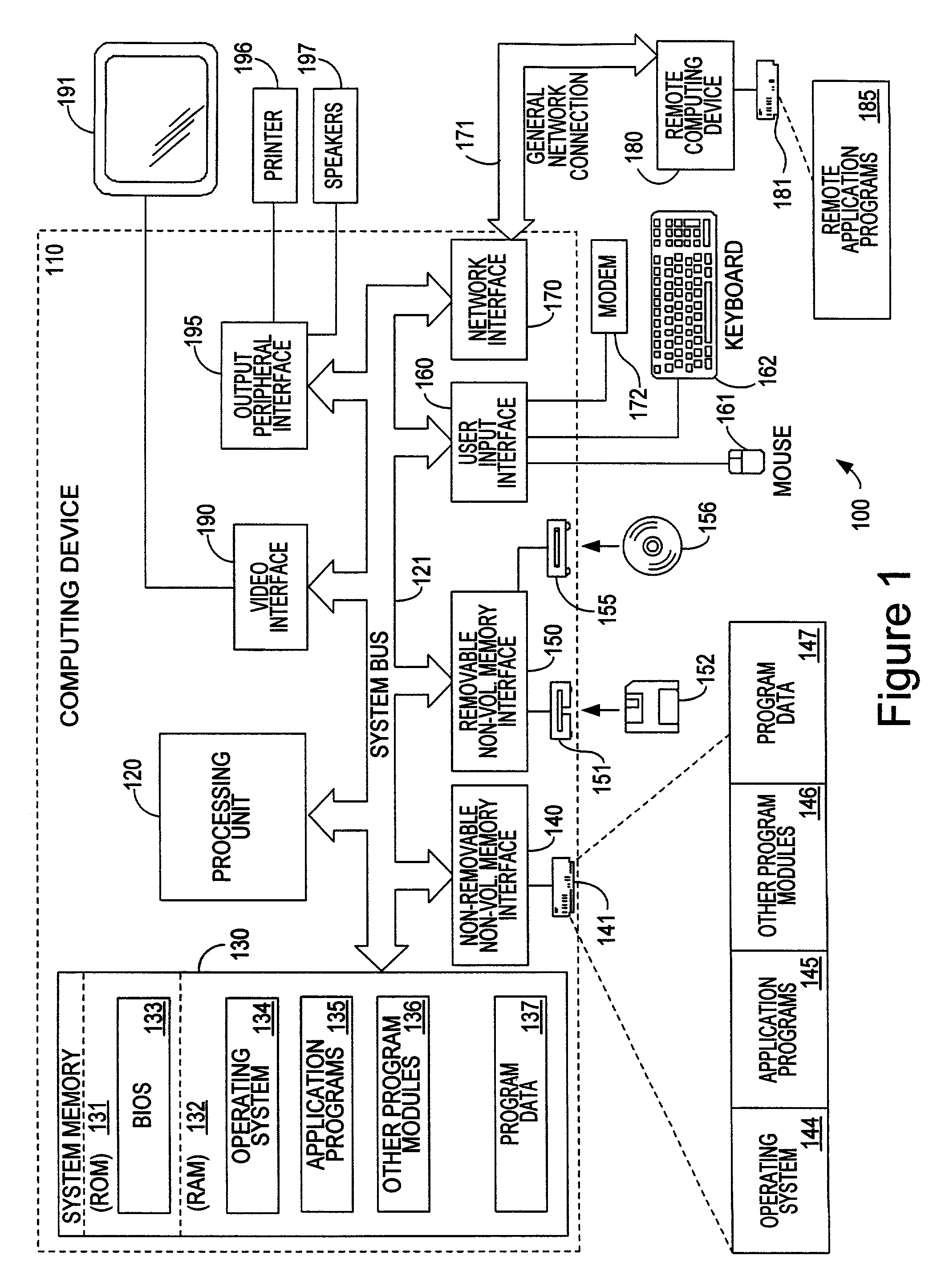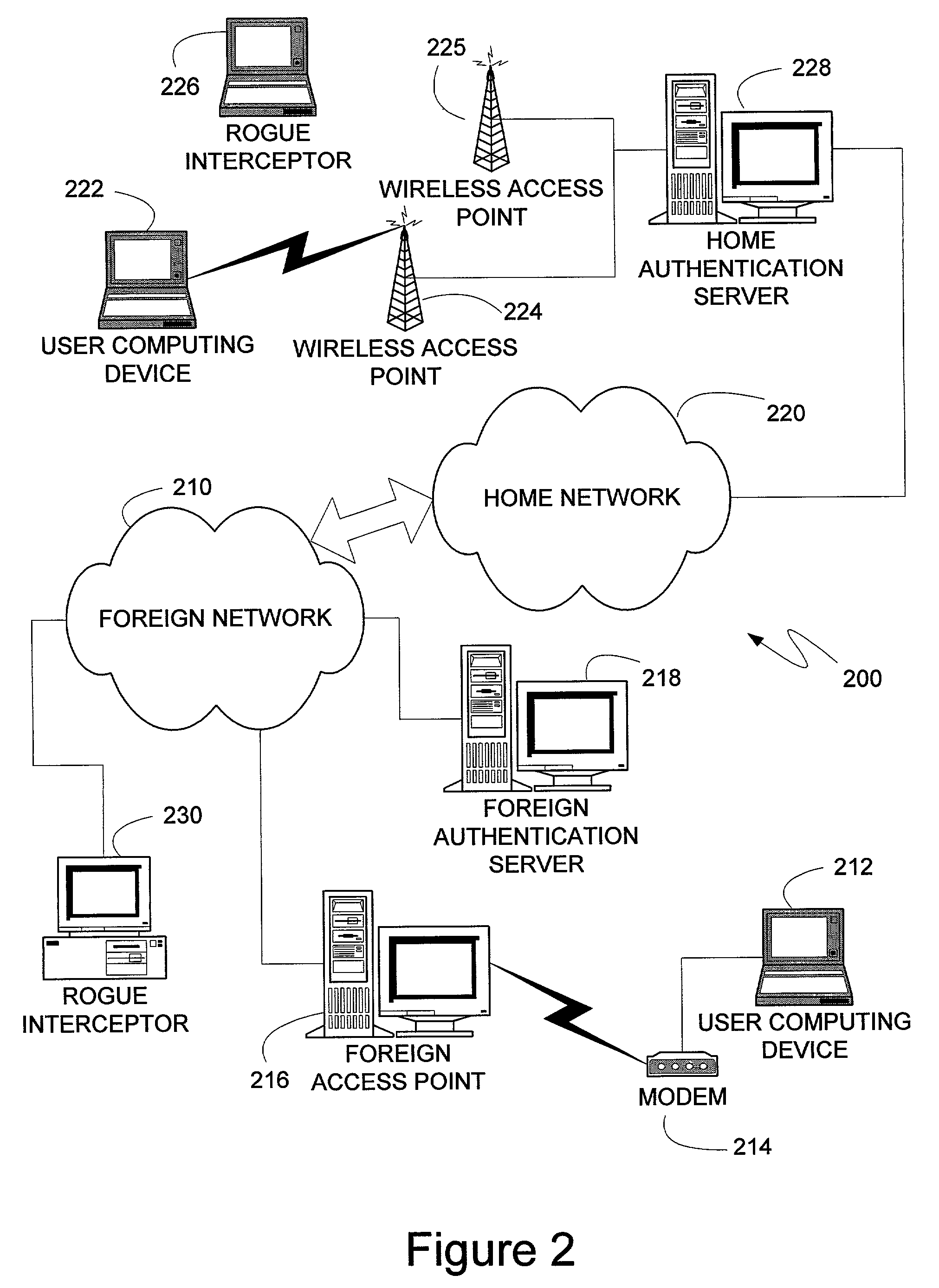TLS tunneling
a tunneling and tunneling technology, applied in the field of network security, can solve the problems of increasing the risk that users' sensitive information can be accessed by rogue third parties, wireless communications are easily intercepted, and cannot be trusted with sensitive information, so as to achieve the effect of less susceptible to interception
- Summary
- Abstract
- Description
- Claims
- Application Information
AI Technical Summary
Benefits of technology
Problems solved by technology
Method used
Image
Examples
Embodiment Construction
[0027]The Transport Layer Security (TLS) protocol can be used to establish a secure method of communication between two devices on a network. Once established, the secure communication can be used by various authentication methods, providing security in environments where intermediate devices cannot be trusted, such as wireless networks, or foreign network access points. Additionally, the caching of session keys and other relevant information can enable the two securely communicating endpoints to quickly resume their communication despite interruptions, such as when one endpoint changes the access point through which it is connected to the network. Also, the secure communication between the two devices can enable users to roam off of their home network, providing a mechanism by which access through foreign networks can be granted, while allowing the foreign network to monitor and control the use of its bandwidth.
[0028]Turning to the drawings, wherein like reference numerals refer to...
PUM
 Login to View More
Login to View More Abstract
Description
Claims
Application Information
 Login to View More
Login to View More - R&D
- Intellectual Property
- Life Sciences
- Materials
- Tech Scout
- Unparalleled Data Quality
- Higher Quality Content
- 60% Fewer Hallucinations
Browse by: Latest US Patents, China's latest patents, Technical Efficacy Thesaurus, Application Domain, Technology Topic, Popular Technical Reports.
© 2025 PatSnap. All rights reserved.Legal|Privacy policy|Modern Slavery Act Transparency Statement|Sitemap|About US| Contact US: help@patsnap.com



